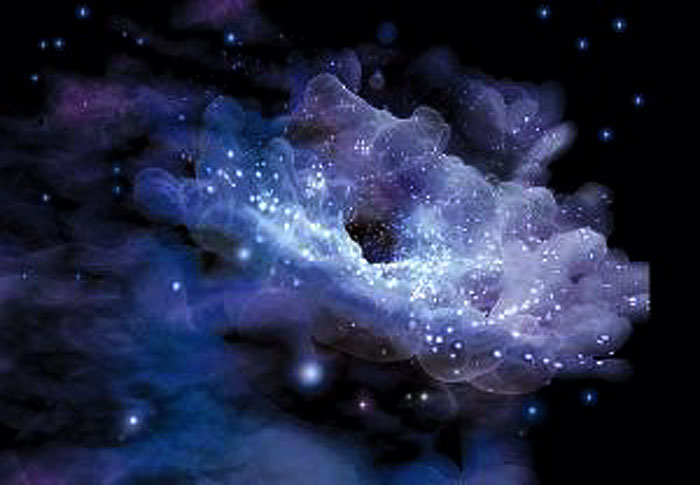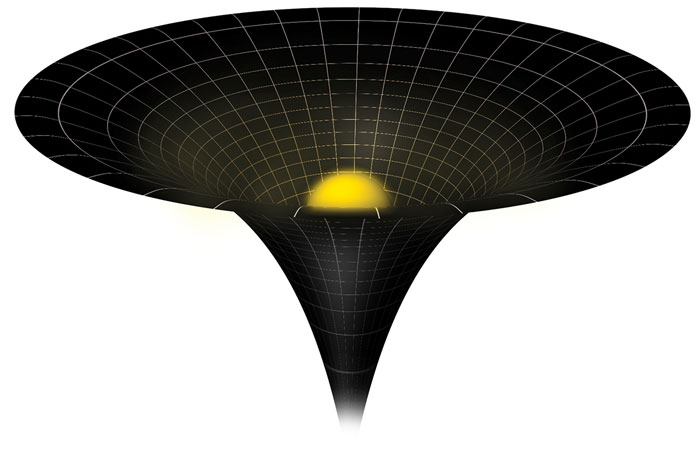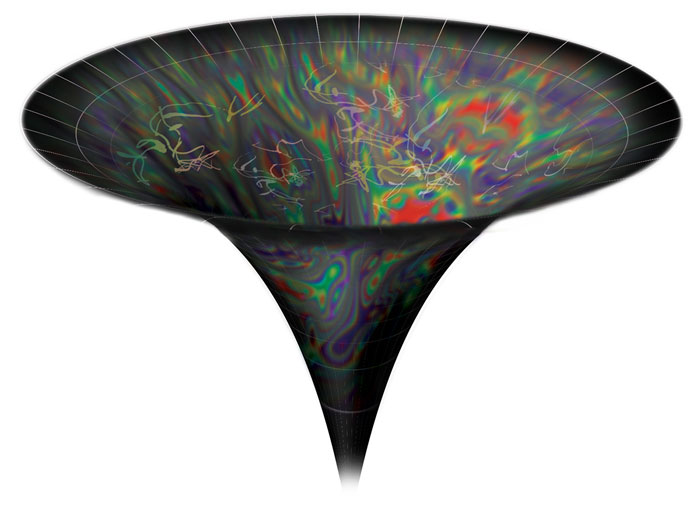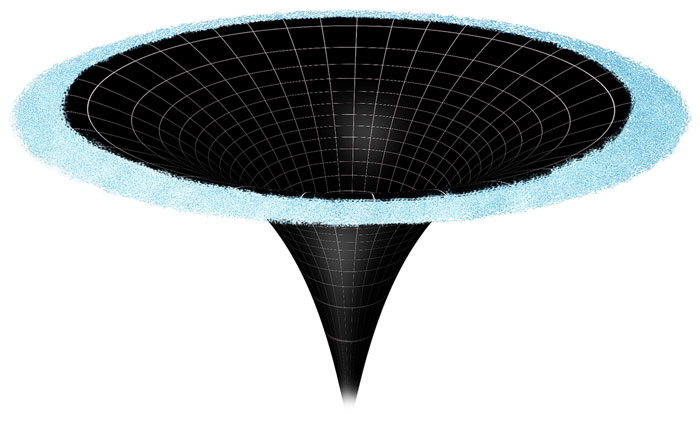.

Bids to solve the black hole firewall paradox are producing a free-for-all in theoretical physics – cue time reversal, walls of ice and bouncing stars
TAKE what you know about black holes and throw it out.
Last week famed physicist Stephen Hawking caused an uproar with his assertion that black holes do not exist – at least not as we've defined them for the past 40 years. Rather than letting nothing, not even light, escape their grasp, Hawking says that this "point of no return" is a fallacy, and black holes will sometimes let trapped light back out.
His idea is a proposed solution to the firewall paradox. The paradox has it that if black holes are as we think, they must be surrounded by rings of fire, though that would violate general relativity.
Hawking's notion does away with a key part of a black hole – its event horizon. It sounds far out, and has been met with heated debate, but even if Hawking is wrong, his high-profile claim highlights the fact that efforts to solve the paradox have turned cosmology on its ear. Firewalls have turned this corner of physics into a cosmic Wild West: a strange frontier where black holes can take on the form of exotic stars, fuzzballs, time machines or iced wormholes (see "The firewall paradox").
The pillars of theoretical physics – quantum mechanics and general relativity – are in a stand-off. One of them will have to blink if this paradox is to be undone.
Trouble began brewing in the 1970s when Hawking mixed quantum mechanics into relativistic black hole theory and concluded that they should emit a tiny amount of radiation, which steals mass until the black hole evaporates. But that would erase all information regarding the matter that formed the black hole, violating quantum rules.
While theories did emerge showing how information might escape in a quantum-friendly way, the uneasy peace didn't last. In 2012, physicists pointed out that an information leak would create scorching-hot particles at the event horizon, which would rapidly burn up anything falling in. This is anathema to relativity, which says that an observer falling into a black hole shouldn't notice anything happening. So once again, black holes are up for grabs.
"There are various ideas, and none is completely concrete," says Juan Maldacena at the Institute for Advanced Study in Princeton, New Jersey. "Hopefully trying to resolve them will lead to a new theory that combines all the ideas into a consistent framework."
Or we could go back to the original paradox, argues Sabine Hossenfelder at the Nordic Institute for Theoretical Physics in Stockholm, Sweden. Alternative interpretations of quantum theory erase the firewall, but only if information remains trapped (arxiv.org/abs/1401.0288).
"No matter which way this goes, it's clear that the things in conflict are very fundamental," says Raphael Bousso at the University of California, Berkeley. "You can't resolve this conflict without a revolution."
The firewall paradox
Black hole theory says they should have moats of fire around them, but this violates general relativity. Trying to solve the problem has created a herd of wild ideas...
.

Bouncing star
Instead of evaporating, black holes could end their lives as exotic stars. Carlo Rovelli at the University of Aix-Marseille in France imagined what would happen if a collapsing star bounced back outwards an instant before it would otherwise have become a traditional black hole.
General relativity says that time runs more slowly in the presence of strong gravity, so while the star's bounce might seem instantaneous to an observer on its surface, from outside we see a black hole that lives for billions of years. Eventually the star pops back out, bringing all its information with it. That kills the firewall, but a major flaw is that, to the star, the bounce happens faster than the speed of light.
.

Stringy fuzzball
String theory is a popular but as-yet unproven framework for trying to unite the quantum and relativistic realms. It has champions in the firewall debate.
If you accept the multiple extra dimensions predicted by string theory, black holes are fuzzballs – tangled balls of strings with no well-defined horizon. In the latest fuzzball description, Samir Mathur at Ohio State University in Columbus says that space-time itself ends just before what looks like the event horizon. Weirdly, it still looks like a black hole from the outside. "If you don't have a horizon, you don't have radiation, you don't lose information and we are all done," he says.
.

Time machine
The firewall arises because of the high energy needed for information to escape the event horizon, according to quantum rules. Juan Maldacena at the Institute for Advanced Study in Princeton, New Jersey, and his colleagues found a way for information to escape more sedately – by letting time inside the black hole flow backwards (Journal of High Energy Physics).
This means that particles escaping from the event horizon can gather the information that's flowing back outwards almost instantly and carry it away, no flames needed. But... an observer falling in could notice the time shift when they entered the black hole, violating relativity.
.

Ice wall
Leonard Susskind at Stanford University in California and Juan Maldacena had tried to solve the paradox by turning a black hole into a weird type of wormhole that is quantum mechanically linked to its own escaping particles of radiation. This lets information out with no fire.
But Raphael Bousso at the University of California, Berkeley, says this solution would raise an equally ugly problem: a wall of "ice" (Physical Review Letters).
The quantum link forces particles near the wormhole's horizon into a particular quantum state, "freezing" them and giving away the horizon's location. "It's like having a signpost at the horizon, which is one thing we're not allowed to do," says Bousso.
.
Quelle: Newscientist
6556 Views
